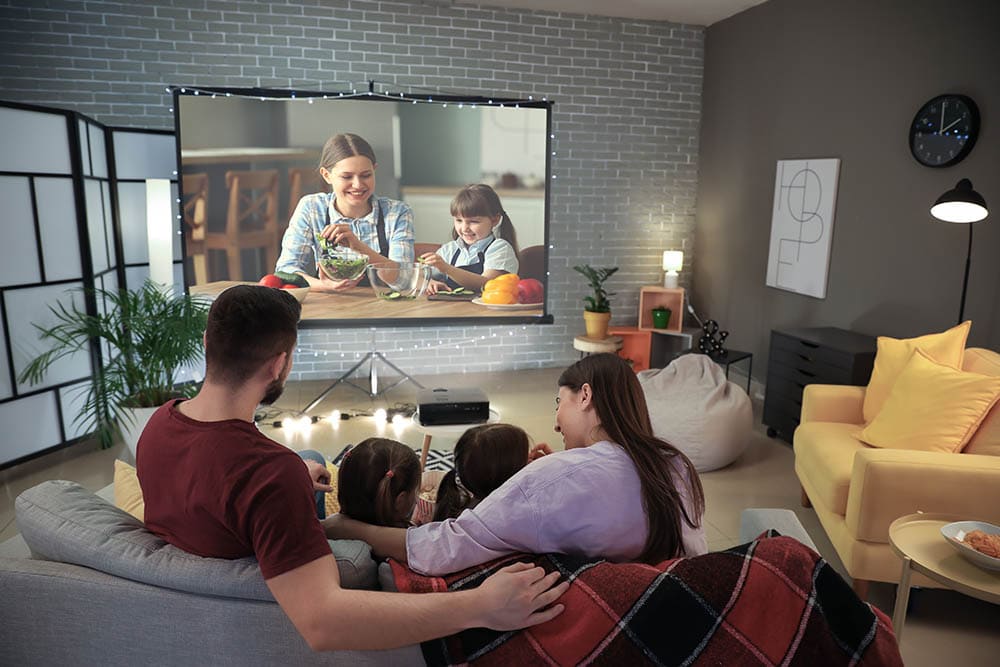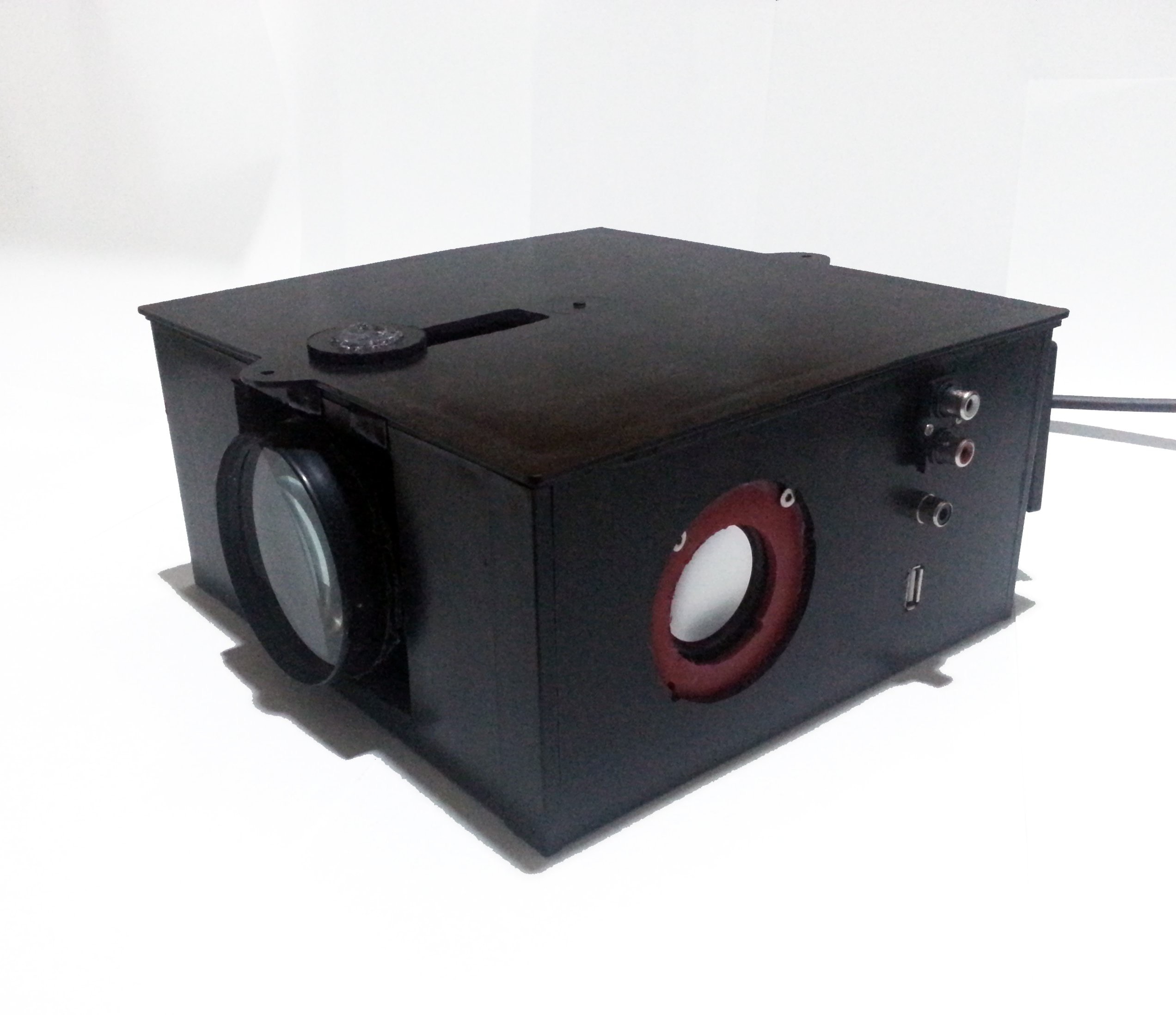3 DIY Projector Plans You Can Make Today
Last Updated on

Do you want to make your own projector for family movie night? Whether you’re looking for a fun weekend project using your phone or building something a bit more in-depth, here are three full-blown projector plans for you to choose from, along with two DIY projector screen options.

Top 3 DIY Projector Plans
1. Cardboard Box Phone Projector by instructables
| Materials: | Magnifying glass, shoebox, foam board, glue sticks, PVA glue, and a smartphone |
| Tools: | XACTO knife, hot glue gun, hacksaw, and a ruler |
| Difficulty Level: | Easy |
This is the most common type of projector that you can build yourself. This cardboard box phone projector doesn’t have the highest quality, but you can complete it for under $20! Whether it’s practicing and learning science skills with the kids or a way to kill an hour or two, it’s a fun project all around.
2. LCD Projector by hack a day

| Materials: | 10W LED and driver, glue, heatsink, plastic box, 12V computer fan, LCD Display, 12V adapter, USB speakers, power socket, two 5” or 7” Fresnel lenses, power switch, 3 RCA female outlet jack connector socket, 90mm magnifying lens, and four 70mm magnifying lens |
| Tools: | Screwdriver |
| Difficulty Level: | Medium |
Consider this LCD projector if you want to build something with quality. There are many parts for the kit that you’ll need to order, but you should be able to get everything you need for less than $50.
Even better, when you’re done, you’ll have a projector that you can use for various occasions. While you’ll need various materials to build this projector, the only tool that you need is a screwdriver!
3. Mini Pocket Projector by raspberry pi
| Materials: | DLP2000 micromirror, raspberry pi, insulation tape, and audio device (optional) |
| Tools: | Computer and soldering gun |
| Difficulty Level: | High |
There’s just something so appealing about having a compact projector. Having one that you built yourself makes it even better. This mini pocket projector is exactly that.
It’ll cost about $150 to get everything that you need, but you will get high-quality results with a projector that you can hook up just about anywhere. It’s a complicated setup, but there’s a comprehensive video that will walk you through everything that you need to do!
What Can I Use Instead of a Magnifying Glass?
Maybe you don’t have a magnifying glass on hand, or perhaps you want to try something different. While a magnifying glass is one of the easiest ways to make your own projector, it’s not the only way.
You can take a stab at making your own with a bottle of water and scissors. Don’t expect the same quality results, but sometimes, it’s simply fun to see what you can make out of different materials!
Can You Use a Sheet as a Projector Screen?
Sure! Ideally, you want a plain white sheet but gray can work too. You want to hang the sheet and try to get it as tight as possible for the best results.
You can also project directly onto a wall, and white or gray walls work best. It’s up to you how much effort you want to put into the screen and what level of results that you’ll be happy with.
How Can I Make a Full HD Projector at Home?
Yes, but the price is going to be much higher, and it’s going to take much more effort. Still, there’s no denying the high-quality results!

Final Thoughts
Whether it is a projector or something simpler, making something yourself adds an extra element to the project that nothing else can match.
Hopefully, after going through the different plans here, you can find something suitable for your needs and get your next projector done in no time!
Featured Image Credit: Pixel-Shot, Shutterstock
Table of Contents
About the Author Robert Sparks
Robert’s obsession with all things optical started early in life, when his optician father would bring home prototypes for Robert to play with. Nowadays, Robert is dedicated to helping others find the right optics for their needs. His hobbies include astronomy, astrophysics, and model building. Originally from Newark, NJ, he resides in Santa Fe, New Mexico, where the nighttime skies are filled with glittering stars.
Related Articles:
Can You Use Binoculars to Look At Stars? How to Choose the Right Pair
How to Clean a Refractor Telescope: Step-by-Step Guide
How to Clean a Telescope Eyepiece: Step-by-Step Guide
How to Clean a Rifle Scope: 8 Expert Tips
Monocular vs Telescope: Differences Explained (With Pictures)
What Is a Monocular Used For? 8 Common Functions
How to Clean a Telescope Mirror: 8 Expert Tips
Brightfield vs Phase Contrast Microscopy: The Differences Explained
